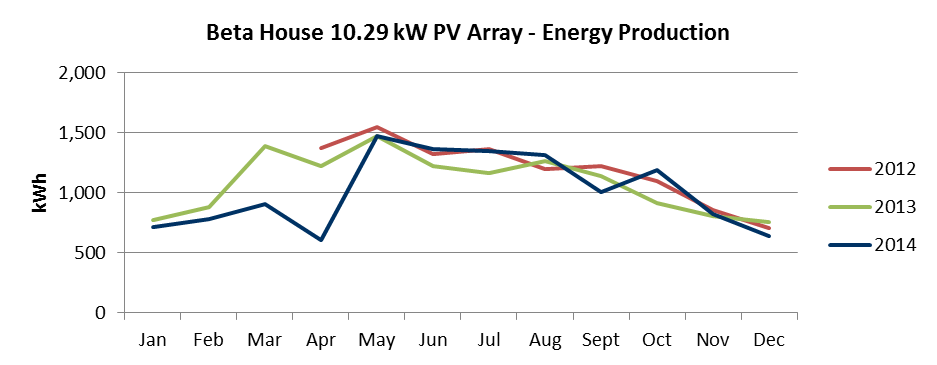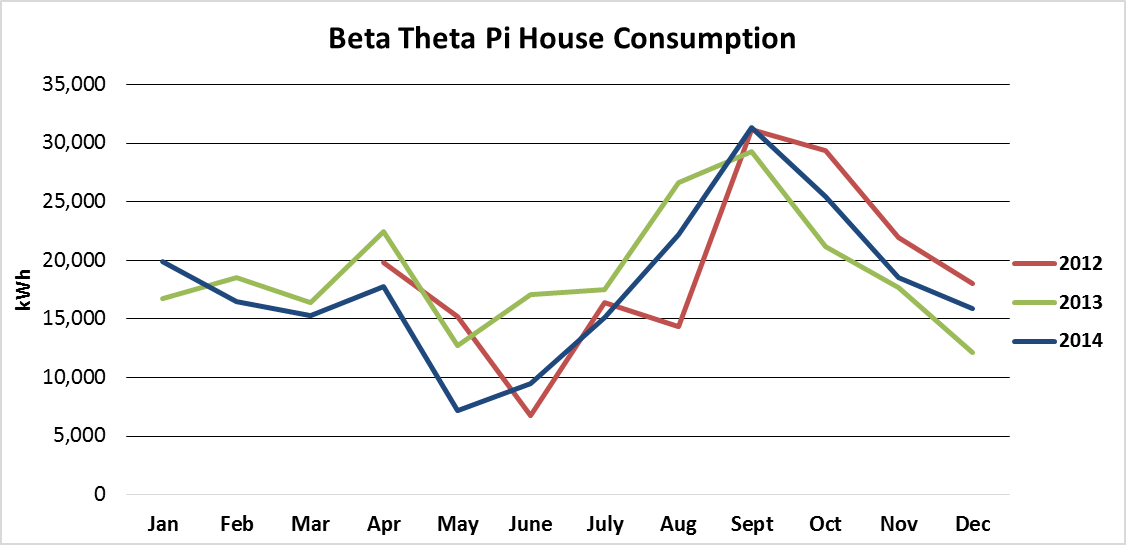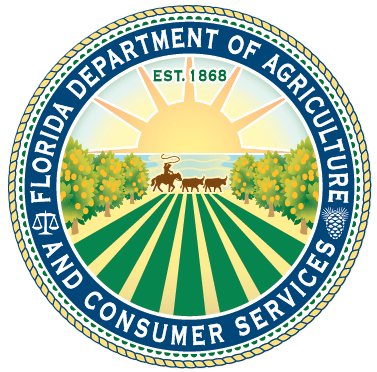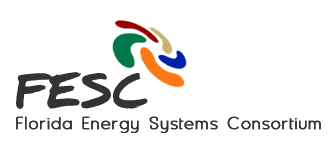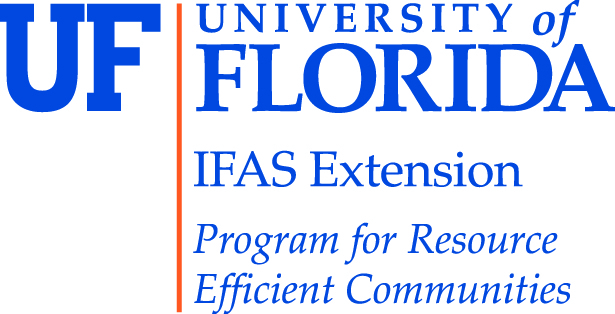Introduction
This case study is best told in the first person, from me, Stuart Block (Figure 1), a Brother of the Gamma Xi Chapter of the Beta Theta Pi fraternity at the University of Florida (UF). Like many good case studies, this one started with an idea that led to a journey, both personal and institutional. This fact sheet describes the process by which I orchestrated the installation of a solar photovoltaic (PV) array on a building located on a large university campus.
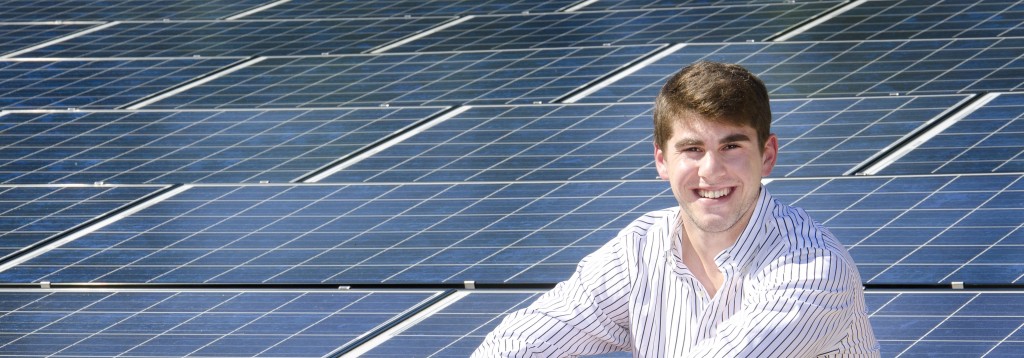
Figure 1. Stuart Block smiles in front of the 10.29 kW solar photovoltaic system installed on the roof of the Beta Theta Pi fraternity house on the University of Florida campus in Gainesville, FL. Credit: Eric Zamora/UF Photography.
Inception of an Idea
My interest in solar PV began during my course of work at UF. At the time, UF was one of the few universities within the United States offering a Sustainability Studies program. In particular, one course, Social and Cultural Aspects of Sustainability in the Built Environment, required students to identify a local sustainability initiative, review how it increased community awareness of an issue, and write a case study on how it successfully brought about positive change through its implementation. In 2009, the City of Gainesville became the first municipality in the United States to successfully implement a European style solar PV feed-in-tariff (FIT) program. I felt that this local success story would be an interesting case study for my course project.
Though I already felt solar PV offered a potent source of renewable energy and a sustainability “feel good” story, I quickly realized it also offered an attractive return on investment. I was hooked. By September 2011, I had the idea of getting a solar PV array installed on the roof of my fraternity house on the UF campus. At that point, I had little knowledge of the process of going solar. What stakeholders would need to be identified and involved? What costs would be incurred to accomplish such a feat? What obstacles might be lurking around each corner?
Taking the First Steps
The first step in determining the opportunities and constraints for improving a building’s energy footprint is to look at the electricity bill and consider its baseline performance. At the time, I had limited knowledge regarding electricity rates, the importance of monitoring kWh consumption, and the need for remediating any existing deficiencies in a building’s energy systems. However, I immediately felt that the $2000+ per month electricity bill at the Beta House was not sustainable from an environmental nor an economic standpoint.
Prior to going solar, it’s important to consider how conservation behaviors and energy efficiency improvements may reduce a building’s energy footprint. Unfortunately, in a fraternity house of 45 college students who all have an arsenal of consumer electronics (e.g., tablets, computers, mobile phones, portable audio players, TVs) and a 24/7 schedule, it is hard to promote a culture of energy conservation. However, our house had recently gone through a significant renovation including energy efficiency updates to appliances, lighting, and other technologies. Furthermore, the Beta House was already structurally prepared and had a favorable orientation. From all of this, I knew that solar PV was a logical next step toward reducing the amount of fossil fuel energy consumed by my fraternity house.
Transcending Personal Goals, Confronting Institutional Realities
This case may be unique from other solar installations on college campuses because of the relationship between my fraternity and the university. At UF, the fraternities themselves own and manage their houses, while the university owns the land on which the building sits. For all building-integrated solar PV installations, it requires collaboration with the building owner, manager, utility bill payer, and tenants. Yet, before any further steps could be taken on my project, it was important to also contact university officials to wade through the complex policies and procedures of higher education, especially the UF Physical Plant Division. Additionally, since the fraternity is a private institution, the UF Office of Sustainability could not provide any direct help to my cause. However, they did provide helpful information on the local solar PV market.
Selecting a Solar PV System Provider and Installer
Once the proper authorization is given to pursue a solar PV project, the next step is identifying the right installer for the job. Fortunately, in 2011 Gainesville, FL had one of the highest installed solar PV capacity per capita of any city in the United States,[1] [2] [3] so there was a plethora of local installers from which to choose. Many factors should be evaluated when selecting the right solar system provider and installation contractor.
Past Experience: Vetting Your Professional Options
First, it is important to look at a solar system provider’s and an installer’s previous project portfolio and customer satisfaction history. Do they have experience in projects similar to yours? Do they complete projects on time and within budget? Were past clients left with a positive experience? Are their previously installed systems performing to expectations? Are their clients staying in line with the project’s estimated return on investment (ROI)? Solar PV should be considered a minimum of a 25-year investment. As such, the selection of the right solar system provider and installer is one of the most important parts to the entire solar process, because you are entering into a long-term relationship with a service provider even beyond the installation phase.
Q&A: Finding the Right Fit for Your Specific Solar PV Opportunity
Second, when dealing with a technology as specific and intricate as solar, it can be quite overwhelming for a consumer to be presented with uncommon but detailed information on the science and financing of solar PV. Evaluating the willingness and coherence of each solar system provider’s and installer’s answers to the inevitable project specific questions that arise through the bid process is a helpful way to intuitively screen for a good fit. Some of the questions you may ask these professionals during the bid process include, but are not necessarily limited to, the following:
- What solar PV technology is proposed and how does it work?
- What are the key components of the proposed solar PV system?
- How does the installation process of this solar PV system unfold?
- How might these components and the installation process differ from competing systems and competing installers?
- What benefits will the proposed solar PV system bring to your unique project goals and considerations?
- What is the cost per watt of the solar PV modules?
- What is the cost per watt for the “balance of the system” (BOS) which includes the inverter(s), electrical components (e.g., wiring, conduit), structural components (e.g., frames, counterweights), business processes (e.g., installation labor, permitting, monitoring), and more?
- What is the projected monthly output of this system within the solar exposure likely on your site?
- What is the projected monthly financial return on the system given all local, state, and federal incentives?
- How can/should the system be monitored and who/how are operating deficiencies resolved?
Creating a Financing Plan & Procuring Incentives
Following a meeting with the solar system provider and installer to identify the diverse goals of your project, they will return with a bid. After considering all the information at hand, the unique micro-inverter technology one of the solar system provider’s offered was a key factor in the Beta Theta Pi final decision. In our case, financing was the biggest challenge. Investments in renewable energy are unique in that they are extremely capital intensive upfront and offer a slow, but consistent and relatively predictable, return on the investment. This is one of the largest deterrents of investing in renewable energy. While the long-term payback realized from solar can be very attractive, the upfront cost may prevent many from affording the technology.
There may be incentives available to overcome the initial cost hurdle for a solar PV project. First, a variety of federal renewable energy tax credits are available for different market sectors and types of systems. Many commercial scale systems qualify for a tax credit up to 30% of the net cost of the system, or after all other rebates have been applied. Unfortunately, Beta Theta Pi did not qualify for the federal tax credit and alternative financing mechanisms needed to be identified.
Beyond the federal tax credits, most utilities in Florida offer rebates or other incentives to offset the initial cost of solar. However, the benefits can dramatically differ by location. Despite our project being located in Gainesville, we were not eligible to participate in the GRU solar feed-in-tariff program because the UF campus is served by Progress Energy (now Duke Energy) of Florida. By chance, I made contact with a solar installer who informed me of our institutional eligibility for the Progress Energy SunSense PV Commercial Rebate.
This incentive was a critical component in making solar an affordable investment for Beta Theta Pi. Yet, I had no prior experience in dealing with utility companies or applying for rebates. This was because the UF Physical Plant Division is responsible for reading all the meters on our campus, directly sub-billing some building owners like Beta Theta Pi, and then paying Progress Energy directly through a few large aggregate accounts. This unique billing structure required Beta Theta Pi to collaborate with UF Physical Plant and apply for the rebate through their larger institutional account with Progress Energy.
Persevering Through Obstacles and Creating Your Own Luck
The application process for our solar rebate might best be explained as a three ring circus. As soon as the log-in portal was opened for the rebate, Progress Energy’s servers crashed and the log-in page shut down due to overwhelming interest in the first-come first-serve funds distribution structure. We feared the worst, but to my surprise, we discovered this was not an uncommon obstacle. It helped to have all the necessary information regarding the rebate program on hand the morning of application submission. Ultimately, once the utility’s online system crashed, we emailed our utility’s representative explaining the problem and providing information about our circumstances. This allowed our project to still get in the rebate queue and secure a $20,000 rebate from Progress Energy.
While the rebate significantly reduced the initial cost of the solar array, Beta Theta Pi still needed further funding to make the investment affordable. Serendipitously, the UF sustainability leadership strategy includes a goal of being a “Carbon-Neutral Campus by 2025.” Beta leveraged our solar PV project as a stepping-stone toward that larger institutional goal. We met with the UF Energy Coordinator and made our case, which successfully led to a $10,000 loan award for the project.
The repayment criteria of this innovative loan included an educational component and the donation of 1,000 hours of community service from Beta brothers to the UF Physical Plant Division Energy Department during the first 5 years of the loan tenor. But I still had to get buy-in from my brothers. Would telling the brothers they had to help “pay” for a solar PV system with their personal time be too much to ask? Would this commitment be possible where creating a culture of conservation seemed like a tough challenge? Fortunately, my brothers understood the value of this project and the legacy it would leave for our entire chapter. It passed a chapter vote and I came to realize my personal project had become a multi-institutional initiative only made possible through the partnership of a brotherhood, an academic family, and a private business ready to work together on a common goal.
A Unique Installation
Once the installer had been selected, the financing had been secured, and all stakeholders were in agreement of the project specifications, all we had left was the installation and its various logistical challenges. A common fear of building integrated solar PV system installation pertains to roof penetrations and the potential of voiding a warranty on the roof or creating vectors for roof leakage. However, the Beta house has a tar and gravel roof which precluded the ability to permanently attach the solar PV structure to the building. Our best option was a ballasted mounting system weighed down with concrete masonry unit blocks. Even with no roof penetrations, this type of system was still rated for 130-MPH winds.
Another unique feature of the Beta Theta Pi solar PV array was the use of micro-inverters to convert the direct current electricity generated by the PV modules into the alternating current form useable for the building’s electrical service. The micro-inverters come with a state-of-the-art live monitoring system that provides data for each individual PV module’s production on an hour-by-hour graph. One of the major benefits of micro-inverters comes in the prevention of shading on a single panel from reducing the production of electricity from the system as a whole.
Final Statistics and Conclusion
After agreeing on the solar PV technology to be used for the system, the size of the system, and securing financing for the payment of the system, the Florida Beta Student Aid Fund signed the contract for a 10.29 kW solar PV system. At the time of original installation, our system was projected to:
- Annually produce 15,962 kWhs
- Offset roughly 15% of the Beta Theta Pi house’s monthly electricity bill
- Have a payback period of 7-10 years
One aspect of this process that I was very pleasantly surprised with, was the willingness of the Beta Theta Pi members to support the project and offer their own time to help pay back the $10,000 from the university. Many of my brothers have since taken an interest in renewable energy, and constantly ask me questions regarding the PV system, how it works, financial returns, etc. It is this sort of response that excites me about the future of renewable energy. It is an industry that targets everyday activities and forces people to realize the true value of the world around them. The fact that a single project can touch so many people and get them excited about an upcoming field is another testament to this project’s success.
The process of going solar is one that is extremely lengthy and can be very complicated at times. The true success of the Beta Theta Pi house came from the ability of diverse stakeholders with different agendas to come together and reach a common ground to achieve a communal goal. May you learn from my journey, as you become the next solar champion!
Addendum: April 2012 through December 2014
In June 2012, I provided an overview of the project that included the installation of a 10.29kW solar PV system on the roof of the Beta Theta Pi house at the University of Florida. We have since revisited the energy production projections and compared them with actual production values provided by the Enphase Enlighten online monitoring system. The following tables and graphs summarize the 10.29kW PV system’s production from April 2012 to December 2014.
Table 1. Projected Vs. Actual Solar PV Production
| Performance Period | Projected Energy Production (kWh) | Energy Production (kWh) | Percent Difference |
| April 2012 – December 2012 | 11,970 | 10,670 | -11% |
| January 2013 – December 2013 | 15,960 | 12,990 | -19% |
| January 2014 – December 2014 | 15,800 | 12,140 | -23% |
Due to the number of variables that can affect the energy production of a solar PV system, it is hard to determine the accuracy of the projections at the time of a PV system’s installation. On average, the Beta Theta Pi house’s solar array has functioned at about 80% of projected levels. The sub-optimal performance can possibly be attributed to a few things: (1) a high frequency of overcast and rainy weather (which was observed in Q1 2014); (2) inaccurate assumptions used in the initial projection calculations regarding solar insolation; and/or (3) unforeseen inefficiencies with the PV equipment. As a result of the lower than anticipated production from the PV system, the second goal of offsetting 15% of the Beta Theta Pi house’s electricity bill has also fallen short of expectations. The following table and graph summarize the Beta Theta Pi house’s energy consumption and resulting offset from the PV system’s production from April 2012 to December 2014.
Table 2. Building Energy Consumption Offset By Solar PV Production
| Performance Period | Energy Consumption(kWh) | Energy Production (kWh) | Percent Offset |
| April 2012 – December 2012 | 183,600 | 10,670 | 5.8% |
| January 2013 – December 2013 | 241,450 | 12,990 | 5.3% |
| January 2014 – December 2014 | 226,770 | 12,140 | 5.3% |
Since the installation of the PV array, the University of Florida’s Physical Plant has raised the rate of electricity from $0.095/kWh to $0.10/kWh, which has proved to be favorable when calculating the PV system’s return on investment. At the time of the installation, the PV system was projected to pay for itself over a 7 to 10 year period after factoring in the $30,000 of procured incentives and loans. Based on the net project cost of $14,000, the system would need to produce enough energy to offset between $1,400 and $2,000 annually. Using the current electricity rate of $0.10/kWh, the Beta PV system has offset $3,580 over 2.75 years resulting in an average of $1,300 per year. As such, the Florida Beta Student Aid Fund is now on track for the PV system to pay for itself over an 11 year period, slightly beyond the projected 7-10 year payback horizon.
Acknowledgements
Author: Stuart Blocka
Reviewers: Hal Knowlesb (2012 and 2015) and Wendell Porterc (2012)
a JDM Associates, Washington, DC; Beta Theta Pi Fraternity Brother; Sustainability Studies Major (2013), University of Florida, Gainesville, FL
b Program for Resource Efficient Communities, Florida Cooperative Extension Service, Institute of Food and Agricultural Sciences, University of Florida, Gainesville, FL
c Department of Agricultural and Biological Engineering, Institute of Food and Agricultural Sciences, University of Florida, Gainesville, FL
First published June 2012. Revised and appended May 2015.
This is a fact sheet produced for the Florida Energy Systems Consortium (FESC). The goal of the consortium is to become a world leader in energy research, education, technology, and energy systems analysis.
Footnotes
[1] Farrell, John. January 6, 2012. Gainesville, Florida, Becomes World Leader in Solar. Clean Technica. Last accessed on June 2, 2015.
[2] Lacey, Stephen. November 21, 2011. Gainesville, Florida is a Bigger Per Capita Solar Producer than California – Thanks to Feed-In Tariffs. Climate Progress. Last accessed on June 2, 2015.
[3] Gipe, Paul. November 21, 2011. Solar PV Leads Small Town into Solar Big Leagues. Renewable Energy World. Last accessed on June 2, 2015.

